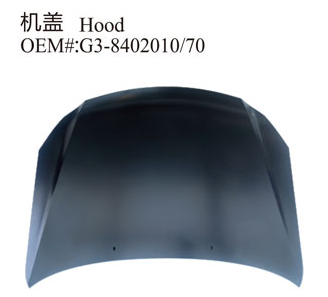There is no need to say much about the cracking of automobile stamping parts. It is obvious that necking is difficult to detect. First of all, understand the mechanism of material deformation. The process of material tensile plastic deformation is mainly composed of three stages: uniform elongation stage, local elongation stage and cracking stage. Uniform elongation stage is the ideal stage, with material length direction, uniform thinning in thickness direction and surface The quality of the material is good, smooth, and the original roughness of the material has no obvious change, which is almost invisible to the naked eye. In the local elongation stage, the material is basically close to the elongation limit, and the purpose of elongation is mainly achieved through local severe and rapid deformation.

In this way, the length direction is elongated and the thickness direction is sharply thinned. Due to the insufficient flow of materials, the surface is rough and grainy. The naked eye looks like an orange peel, and the closer it is to the cracking, the rougher the surface will be. Moreover, with the increase of necking degree, the surface will present a kind of gray white. These two are relatively obvious characteristics. Of course, the relationship between the material thickness and it needs to be In my own practical experience, the method is to do cutting test, cut parts with different degree of phenomenon, and then measure the thinning degree. Focus on and manage the crack prone places.
When we step on the brake, if we find that the brake pedal does not return to its original position immediately after releasing the brake pedal, or if we can not feel the usual resistance when stepping down, we can judge that the brake does not return to its original position.
The causes of the brake not returning to the original position may be: the brake fluid is missing; the brake wheel cylinder, pipeline and joint are leaking; the master cylinder and slave cylinder parts are damaged, so that they can be sent to be repaired and replaced immediately to ensure travel safety.
When stepping on the brake, the body shaking is also a common brake fault, most of which appear on the old body with a long service life. The causes are mainly due to wear caused by long-term use, and the surface flatness of brake disc is inaccurate. The automobile sheet metal parts manufacturers suggest that the brake pads should be re polished or replaced with new ones.
"Side brake" refers to the situation that the steering wheel always deflects to one side when the brake stops. The main reason for the failure is that the left and right wheel cylinders of the brake system have problems, and the force on the brake pads becomes uneven on both sides.
The speed of the brake disc is obviously hard to detect when the car is running at a high speed. But when the car stops suddenly, the difference becomes very obvious immediately. The wheel on the side with larger force of the wheel cylinder stops first, and the other side is still moving forward, and the steering wheel will deflect uncontrollably. The maintenance method is to replace the brake system cylinder.
Copyright By © Jiangsu Halreal Vehicle Industry Co., Ltd. Powered by Yicheng Network